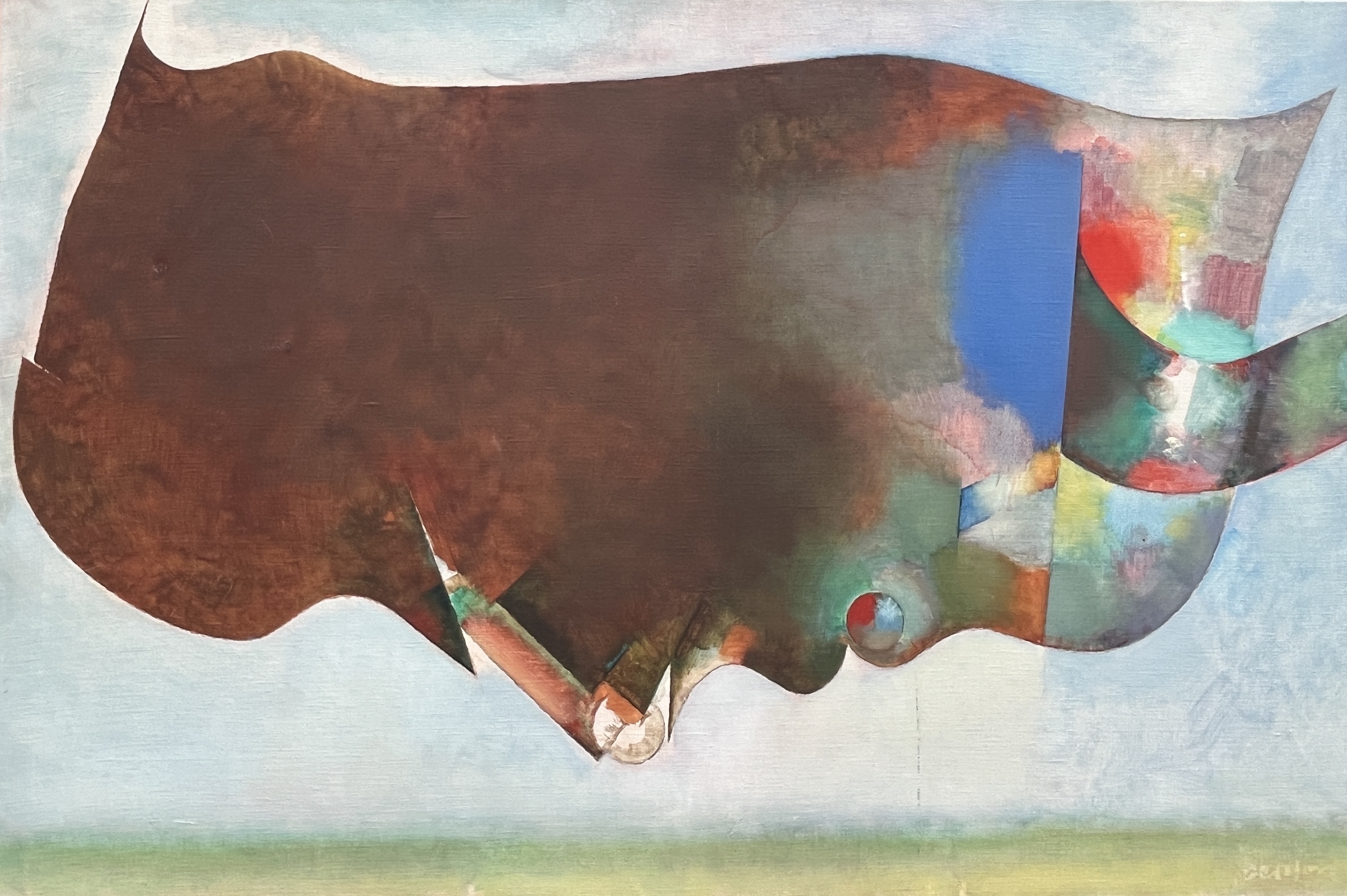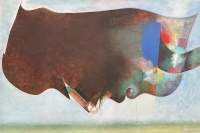Gerzson, Pál The prophecy

Current auction
In case of questions please ask:
Details
Description
Gerzson Pál was a versatile Hungarian artist who studied at the Academy of Fine Arts in Budapest under masters such as Endre Domanovszky, Gyula Hincz and János Kmetty. In addition to his easel paintings, he designed numerous large-scale works including tapestries, wood intarsia, stained glass, and enamel, and was also active as a graphic artist.
His painting gradually moved away from naturalistic representation toward abstraction. From the 1960s onwards, Gerzson created works with cubist features; his period in Szigliget, beginning in 1969, marked a significant renewal of his art. By the 1970s, he transformed his direct impressions of nature, and his exploration of color and light, into abstract planar compositions.
The present painting, “The Prophecy,” is a quintessential example of this mature phase. A floating, geometrically fragmented structure—composed of circular and arched forms—spans the center of the canvas like a drifting cloud. A yellow-green strip along the bottom suggests an infinite horizon, while above it, a luminous, vibrating background evokes the open sky. Yet the work is not a traditional landscape: the focus lies on the central structure, within which a faint human profile emerges, lending the composition a constructive and spiritual quality.
“The Prophecy” occupies a distinctive place in Gerzson’s oeuvre. It unites the disciplined formalism of his cubist period with the meditative lightness of his “Szigliget cycle,” inspired by nature and water. The result is an expressive yet airy composition where colors and forms merge in poetic motion—a harmonious synthesis of intellect and intuition.



